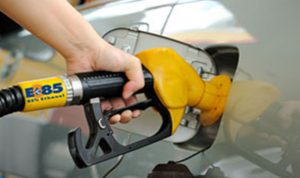
Biofuels are as old as the auto industry itself.
In fact, Henry Ford’s first Model T was designed to run on ethanol, as well as gasoline. As technology has evolved, producing biofuels has become easier and cheaper, and both production and distribution have grown rapidly. The United States Department of Agriculture expects ethanol and biofuel production in the U.S. to grow by about 40 percent over the next decade.
There are several reasons biofuels are gaining popularity as viable replacements to petroleum-based fuels, including:
- Ethanol removes moisture that gasoline leaves behind in your fuel system. Continuous use will keep your engine and fuel system clean!
- Adding just 10 percent ethanol to your gasoline can reduce emissions by up to 50 percent. Be sure to use ethanol to lessen your impact on the environment.**
- With its high octane rating, ethanol is the highest performance fuel on the market and keeps today’s high-compression engines running smoothly.*
- Ethanol-blended fuel keeps your fuel system clean for optimal performance because it does not leave gummy deposits.*
- Ethanol helps prevent wintertime problems by acting as a gas-line antifreeze.*
- Ethanol-blended fuels are approved under the warranties of all auto manufacturers marketing vehicles in the U.S.*
- All mainstream manufacturers of power equipment, motorcycles, snowmobiles and outboard motors permit the use of E10 in their products.*
- As bio-refineries become more efficient, the cost to produce ethanol continues to decrease. However, the cost of producing gasoline continues to increase as oil becomes harder to find.
*Source: RFA 2013
**Source: CFDC 2010 Ethanol Facts

